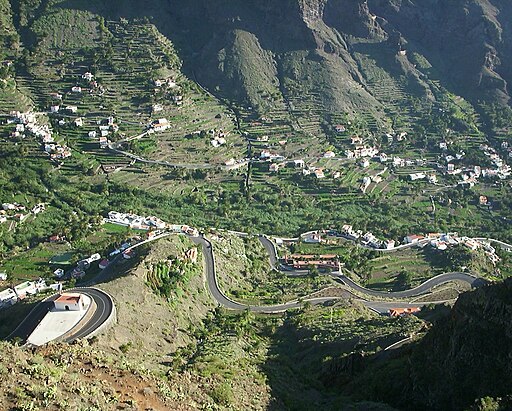Winter is coming, the days are getting shorter, but the wonderful climate of La Gomera, one of the best in the world, allows us to visit the beautiful landscapes all year round.
Take the opportunity to fill your lungs with fresh air, oxygenate your body and relax, moving from one landscape to another and let nature slowly envelop all your senses.
With this objective, today we suggest you take a walk through a landscape dominated by steep slopes, cliffs and ravines chiselled by water and wind, the Rural Park of Valle Gran Rey.
A protected natural space, located in the southwest of the island, between the municipalities of Valle Gran Rey and Vallehermoso around the ravines of Valle Gran Rey and Argaga, two of the most imposing of the whole island. To the north, it borders the Natural Monument of Lomo del Carretón, a cliff located between 500 and 900 meters above sea level, above the Taguluche Valley and the Alojera Valley.
It presents a great natural diversity, deep ravines dotted with palm trees, springs or steep cliffs that contrast with fertile valleys. And it is precisely in these valleys, where small hamlets such as Los Granados, La Vizcaína, Lomo del Balo or Retamal are located, that give rise to a curious rural landscape, where terraces and staggered terraces predominate and traditional Canarian architecture , contrasting with the almost wild nature that surrounds them.
Within this beautiful space are several places of scientific interest such as the Massifs of Mérica, the last refuge of the Giant Lizard of La Gomera (Gallotia bravoana) the Cliffs of Argaga, or the Charco del Cieno, one of the best wetlands that remain in the Isla de la Gomera and despite its small size is one of the few remaining natural salt marshes in the Canary Islands.
In the Risco de la Mérica and its surroundings, a few specimens of the Giant Lizard of La Gomera in freedom are located, which was rediscovered in 1999, at the base of the cliffs of La Mérica, specifically in the area of Quiebracanillas. In this place, a recovery center has been built to prevent the extinction of this fabulous animal, which can be visited by appointment.
When occupying almost 2000 hectares, and extending from sea level to 1000 meters of altitude, in this park we find a very heterogeneous vegetation.
In the high areas, junipers and brooms, below cardones and tabaibas, along with halophytic plants (that grow in saline soils) and in the cliffs, an endemic flora of high botanical value, with endangered species, such as centaurs or evergreens.
This rural Park is also an important place of passage for migratory and aquatic birds. On the cliffs of Argaga, you can enjoy the girls, terns, storm petrels or petrels of Bulwer.
There are several trails that run through this interesting space, geology and unique fauna and traditional crops. You can choose one of them as your next path to travel in La Gomera.

